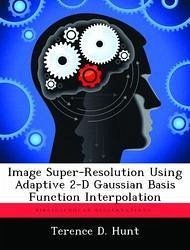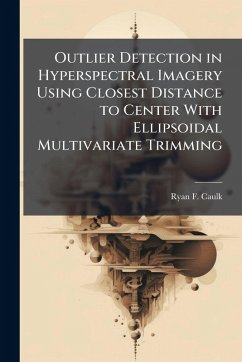
Image Super-Resolution Using Adaptive 2-D Gaussian Basis Function Interpolation
Versandkostenfrei!
Versandfertig in über 4 Wochen
15,99 €
inkl. MwSt.

PAYBACK Punkte
8 °P sammeln!
Digital image interpolation using Gaussian radial basis functions has been implemented by several investigators, and promising results have been obtained; however, determining the basis function variance has been problematic. Here, adaptive Gaussian basis functions fit the mean vector and covariance matrix of a non-radial Gaussian function to each pixel and its neighbors, which enables edges and other image characteristics to be more effectively represented. The interpolation is constrained to reproduce the original image mean gray level, and the mean basis function variance is determined usin...
Digital image interpolation using Gaussian radial basis functions has been implemented by several investigators, and promising results have been obtained; however, determining the basis function variance has been problematic. Here, adaptive Gaussian basis functions fit the mean vector and covariance matrix of a non-radial Gaussian function to each pixel and its neighbors, which enables edges and other image characteristics to be more effectively represented. The interpolation is constrained to reproduce the original image mean gray level, and the mean basis function variance is determined using the expected image smoothness for the increased resolution. Test outputs from the resulting Adaptive Gaussian Interpolation algorithm are presented and compared with classical interpolation techniques. This work has been selected by scholars as being culturally important, and is part of the knowledge base of civilization as we know it. This work was reproduced from the original artifact, and remains as true to the original work as possible. Therefore, you will see the original copyright references, library stamps (as most of these works have been housed in our most important libraries around the world), and other notations in the work. This work is in the public domain in the United States of America, and possibly other nations. Within the United States, you may freely copy and distribute this work, as no entity (individual or corporate) has a copyright on the body of the work. As a reproduction of a historical artifact, this work may contain missing or blurred pages, poor pictures, errant marks, etc. Scholars believe, and we concur, that this work is important enough to be preserved, reproduced, and made generally available to the public. We appreciate your support of the preservation process, and thank you for being an important part of keeping this knowledge alive and relevant.












